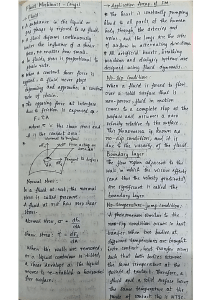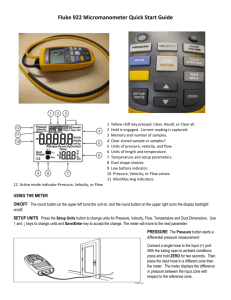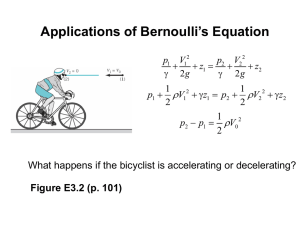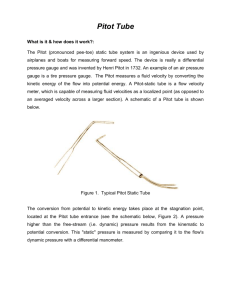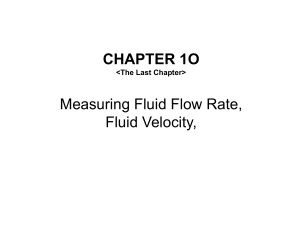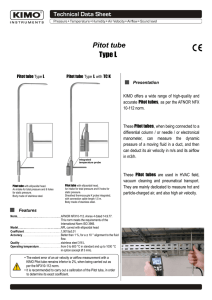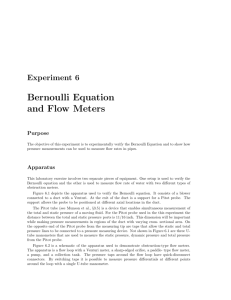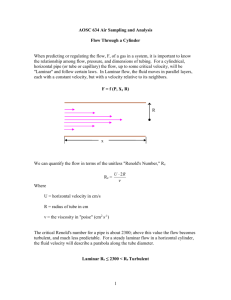Pitot Tube Theory
advertisement
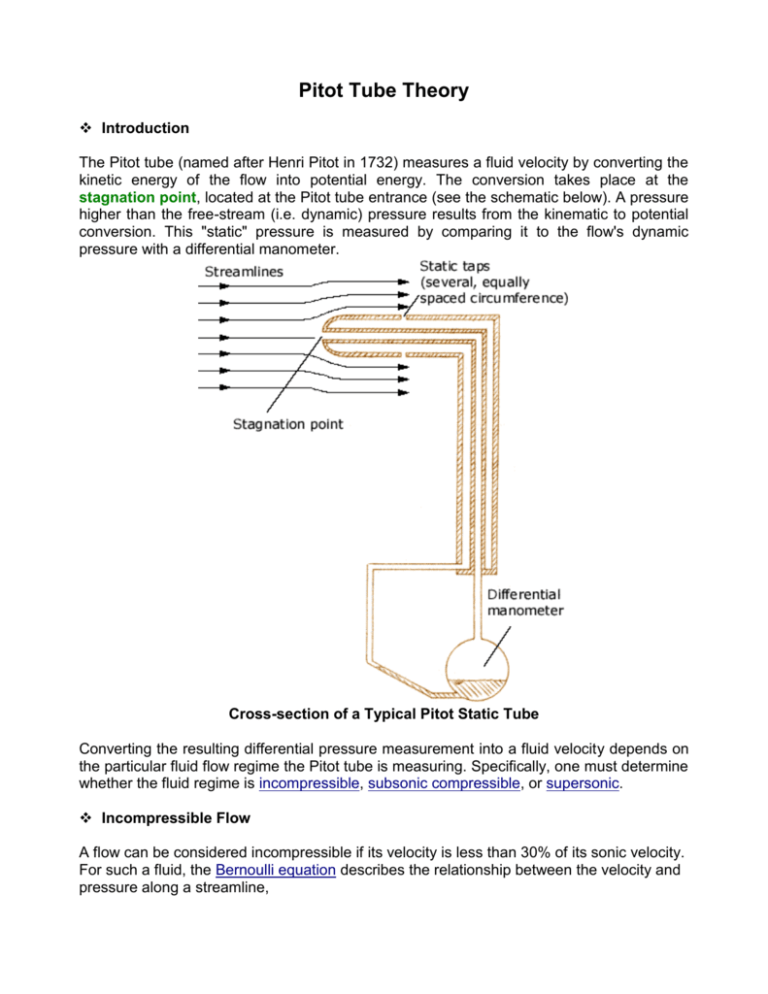
Pitot Tube Theory Introduction The Pitot tube (named after Henri Pitot in 1732) measures a fluid velocity by converting the kinetic energy of the flow into potential energy. The conversion takes place at the stagnation point, located at the Pitot tube entrance (see the schematic below). A pressure higher than the free-stream (i.e. dynamic) pressure results from the kinematic to potential conversion. This "static" pressure is measured by comparing it to the flow's dynamic pressure with a differential manometer. Cross-section of a Typical Pitot Static Tube Converting the resulting differential pressure measurement into a fluid velocity depends on the particular fluid flow regime the Pitot tube is measuring. Specifically, one must determine whether the fluid regime is incompressible, subsonic compressible, or supersonic. Incompressible Flow A flow can be considered incompressible if its velocity is less than 30% of its sonic velocity. For such a fluid, the Bernoulli equation describes the relationship between the velocity and pressure along a streamline, Evaluated at two different points along a streamline, the Bernoulli equation yields, If z1 = z2 and point 2 is a stagnation point, i.e., v2 = 0, the above equation reduces to, The velocity of the flow can hence be obtained, or more specifically, Subsonic Compressible Flow For flow velocities greater than 30% of the sonic velocity, the fluid must be treated as compressible. In compressible flow theory, one must work with the Mach number M, defined as the ratio of the flow velocity v to the sonic velocity c, When a Pitot tube is exposed to a subsonic compressible flow (0.3 < M < 1), fluid traveling along the streamline that ends on the Pitot tube's stagnation point is continuously compressed. If we assume that the flow decelerated and compressed from the free-stream state isentropically, the velocity-pressure relationship for the Pitot tube is, where g is the ratio of specific heat at constant pressure to the specific heat at constant volume, If the free-stream density rstatic is not available, then one can solve for the Mach number of the flow instead, where is the speed of sound (i.e. sonic velocity), R is the gas constant, and T is the free-stream static temperature. Supersonic Compressible Flow For supersonic flow (M > 1), the streamline terminating at the Pitot tube's stagnation point crosses the bow shock in front of the Pitot tube. Fluid traveling along this streamline is first decelerated nonisentropically to a subsonic speed and then decelerated isentropically to zero velocity at the stagnation point. The flow velocity is an implicit function of the Pitot tube pressures, Note that this formula is valid only for Reynolds numbers R > 400 (using the probe diameter as the characteristic length). Below that limit, the isentropic assumption breaks down.
